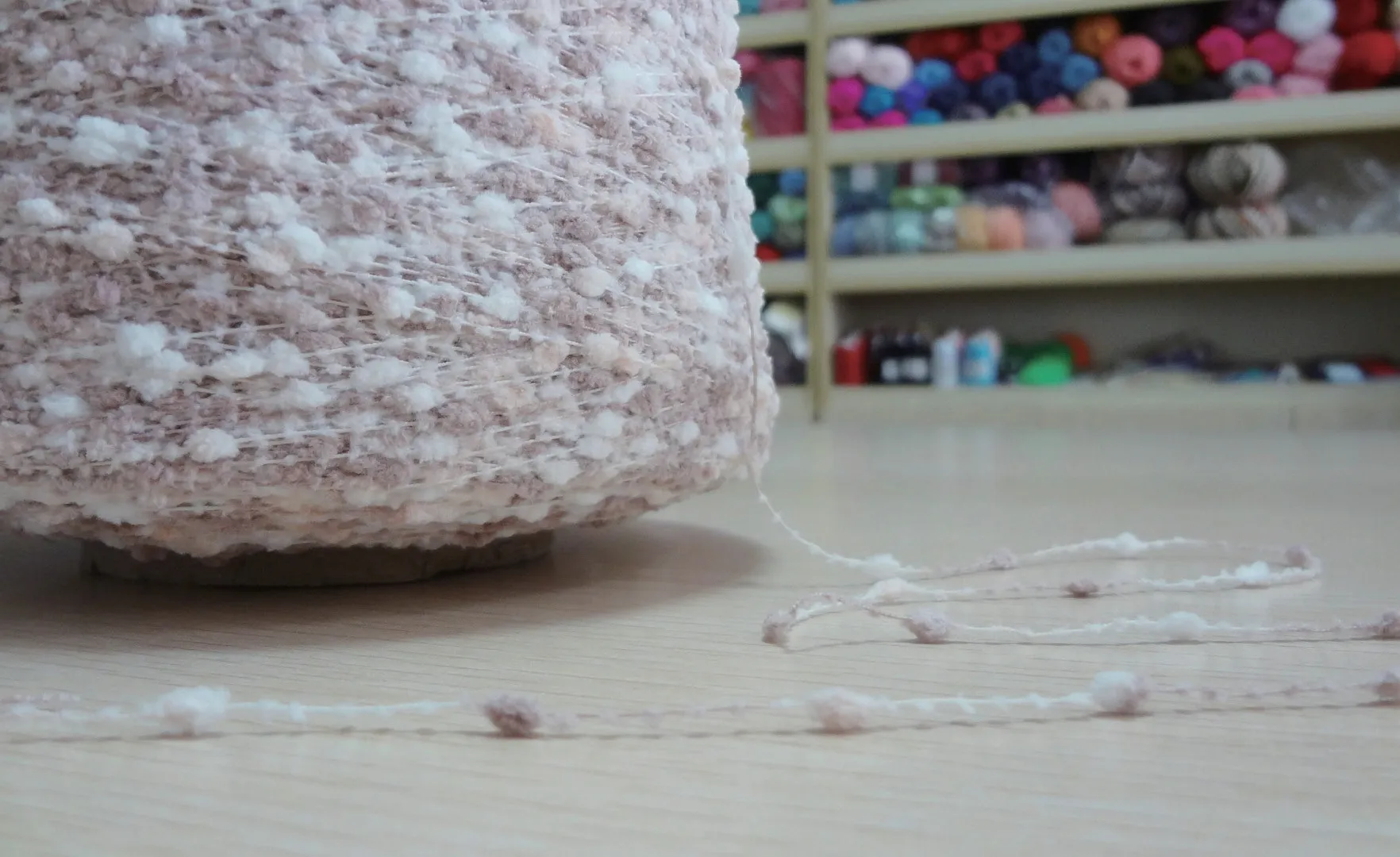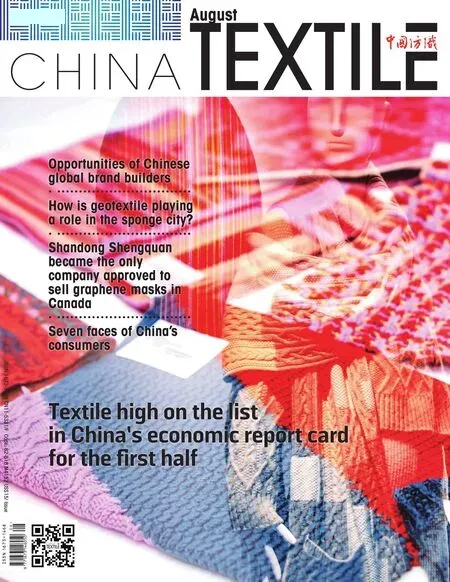Supply and demand of yarn market forecast in the second half of year
Review of yarn market

In the first half of 2021, the price trend of pure cotton yarn market fluctuates and divides into three stages. In the first stage, the yarn increases in stages, with a cumu—lative increase of 2,600 yuan/ton in two rounds; in the second stage, it stabilized after a period of decline, falling by 1,600 yuan/ton; the third stage, yarn up 1,000 yuan/ton, the market dwindled profit. As of the end of the half year, the base price of pure cotton yarn C32S is 25,150 yuan/ton, +35.22 percent year—on—year. From January to June 2021, the average price of C32S is 24,708 yuan/ton, +24.60 percent year—on—year.
The first stage: the rising period from the beginning of January to March, the valley value is 23,200 yuan/ton,the peak value is 25,800 yuan/ton, and the rise is 2,600 yuan/ton.
The main rise in the yarn market was shifted from inventory—driven to raw material—driven. In January, due to the lockdown and the low yarn supply in Hebei, the supply of downstream enterprises was delayed due to environmental protection and gas cuts and power restric—tions, which provided an opportunity for the market to rise. After the Spring Festival in February, raw materials rose, leading to an earlier traditional peak season.
The second stage: the correction period from mid—early March to mid—late April, the peak value is 25,800 yuan/ton, the valley value is 24,200 yuan/ton, down by 1,600 yuan/ton.
There are three main callback factors in the yarn market. First, after the yarn rises too fast, the down—stream industry conflicts with high—priced yarn, which leads to the damage to the industry chain demand; sec—ond, the weaving industry has had a weak performance with fewer new orders despite the peak season, resulting in the price decline of the grey cloth; thirdly, the U.S. ban on Xinjiang cotton, accompanied by its cotton inrentory already in spinner's warehouse, affected cotton market and tarn price.
The third stage: from late April to June, the valley value was 24,200 yuan/ton, and the peak value was 25,200 yuan/ton, up by 1,000 yuan/ton.
Yarn prices rose first and then fell, supply was tight first and then loosened. At the end of April, rain and snow in Xinjiang affected new cotton planting, cotton spot rose sharply, Indian orders fell back, downstream enterprises replenished goods in advance to drive the production and marketing of spinning enterprises, the price of yarn rose 500—1,000 yuan/ton by the beginning of May. Subse—quently, affected by macro factors, with the arrival of tex—tile industry off—season, yarn is dropped trend.
Supply and demand
Yarn capacity
Spinning spindles size before 2005, close to or even more than 10 percent a year growth in development, but along with the economic crisis and the decline in cotton production per mu on the mainland, unable to continue to meet the needs of domestic cotton spinning industry growth, meanwhile, the chemical fiber began to enter the market in great quantities, and cotton spindles is also rapidly increasing. As the market bubble subsided,the number of cotton spindles began to decrease. With the gradual bottoming of industry prices and the second round of development of cotton spinning industry driven by Xinjiang, China’s spindle production capacity increased again. Because of the rapid development, Xinjiang issued an emergency notice to strictly control the cotton spin—ning industry in 2018. Since then, the number of spindles in China has gradually returned to normal. By 2020, the size of spinning yarn shrunk to 110 million spindles.

Yarn import and exp ort
In 2021, the export and import of yarn have achieved year—on—year growth of 28.52 percent and 34.85 percent respectively. Among them, pure cotton yarn exports +9.6 percent and imports +25 percent; exports of pure polyes—ter yarn were +21.97 percent and imports —19.86 percent year—on—year. The export of rayon yarn was 34.61 per—cent and the import was 44.47 percent year—on—year.
Yarn demand
From January to June 2021, the average start—up of yarn (comprehensive) was at an average of 73.52 percent, +35.10 percent year—on—year, and +0.5 percent compared with 2019. In terms of product start—ups, from January to June of the year, polyester yarn was +13.7 per—cent year—on—year, —14.0 percent compared with 2019;cotton yarn was +68.6 percent year—on—year, +28.6 per—cent compared with 2019; rayon yarn was +19.3 percent year—on—year, —6.8 percent compared with 2019.
From January to June 2021, the average start—up of weaving (cotton spinning) was 56.12 percent, +30.54 percent year—on—year, but —18.32 percent compared with 2019. The start—up of weaving during the year was sig—nificantly better than that of last year, but there was still a big gap compared to the pre—pandemic.
On the whole, the global economy is recovering.According to historical data from previous years, weav—ing start—up rose gradually in August until it gradually declined in mid—to—late September. However, weaving orders in this year are small—batch and multi—frequency.It will last up to two months.
From January to June 2021, dyeing and printing in Jiangsu and Zhejiang start—up was an average of 61.21 percent, +25.47 percent year—on—year. The weaving in—dustry performed normally in the traditional peak season.After the end of the orders on June 18, there were not many new orders. The overall load of the weaving, dyeing and printing industry is still far from the pre—pandemic.
Inventory data
Finished yarn
In June 2021, the ending inventory of pure cotton yarn, pure polyester yarn, and rayon yarn decreased com—pared with the same period in 2020. The finished product inventory of pure cotton yarn was 10.29 days, a decrease of 21.31 days compared with the same period in 2020,and a decrease of 19.88 days compared with the same period in 2019. The finished yarn inventory was 14.19 days, down 2.41 days from the same period in 2020,and 3.69 days more than the same period in 2019; the finished rayon yarn inventory was 12 days, down 3.4 days from the same period in 2020, and down 11 days from the same period in 2019.
In the Spring Festival of 2021, weaving factories stopped work early, started work late, logistics restric—tions, and “Xinjiang Cotton” incident, the inventory of finished products related to cotton yarn was at a high level in the first half of the year. Driven by high profits in the market, speculation demand to increase enterprise inventory transfer to social inventory, cotton yarn produc—tion increased, the outbreak of the pandemic in India,subsequent orders back, Europe and the United States for the boycott of Xinjiang cotton also began to loosen, the inventory of cotton yarn remained low.
Raw material of yarn
By the end of June 2021, the ending stock of raw material cotton and polyester staple fiber of yarn enter—prises is higher than that of 2020 and 2019, while the stock of viscose staple fiber is lower than that of 2020.Cotton inventory for 44.94 days, 17.96 days more than the same period in 2020 and 12.96 days more than the same period in 2019; polyester staple fiber raw material inventory for 19.51 days, 9.13 days more than the same period in 2020 and 3.69 days more than the same period in 2019; viscose staple fiber inventory for 33 days, down 12.3 days compared with the same period in 2020, and up 18 days compared with the same period in 2019.
From January to June 2021, yarn enterprises’ inven—tory remains low, and the capital chain is relatively abun—dant. In the off—season, there are still continuous orders to follow up. At present, yarn enterprises are in short supply,and the reserve of raw cotton is higher than that of the same period in previous years.
Processing fees
From January to June 2021, the average spot pro—cessing fee of T32S is 5,271 yuan/ton, +19 percent year—on—year and +10.4 percent compared with 2019;the average spot processing fee for C32s is 7,054 yuan/ton, +21.4 percent year—on—year and +31.1 per—cent compared with 2019. The average spot process—ing fee for R30s is 3,745 yuan/ton, —4.0 percent year—on—year, and —23.2 percent compared with 2019. On the whole, the processing cost of cotton yarn and poly—ester yarn is obviously better than rayon yarn.
Yarn industry trend forecast
Before the new cotton comes into the market,quota and rotation can relieve the pressure of cotton,but the market quality resources are scarce, the actual cotton cost of yarn enterprises increases month by month, while the yarn unit price stops rising after May and gradually drops, and the spinning profit gradually narrowed. The new cotton on the market after Sep—tember, and the expected production reduction and rush collection will push up the spinning cost, yarn en—terprises in order to protect the processing fee, product prices are bound to rise.
In the third quarter, the high temperature and humidity weather caused yarn companies to reduce production. Although the finished product inventory has risen slowly, it can be maintained at a low level. In September, the yarn market enters the traditional peak season. The increase in cost and demand during the peak season is bound to promote the industry. Mean—while, global vaccines are gradually being promoted,demand is released, and the industry is still worth to expect.
On the whole, the yarn market has diverged in the off—season. Especially in July—August, due to the imbalance in supply and demand of OE and spinning yarn, there are certain fine—tuning expectations.Worsted and high—count yarns are still tight, and prices are still resistant to fall. Entering the fourth quarter, it is expected that the raw cotton cost will match the peak season demand, and the global pan—demic situation will improve, and the yarn is likely to rise but not fall.
- China Textile的其它文章
- Spandex price survey: demand greater than supply
- As price goes up and down, how the fabric enterprises survive?
- 2020/2021 China garment market development report
- Dye production decreased but is expected to pick up
- Prosperity index of the national textile and apparel specialized market declined overall
- Foreign trade trend in the second half of the year

